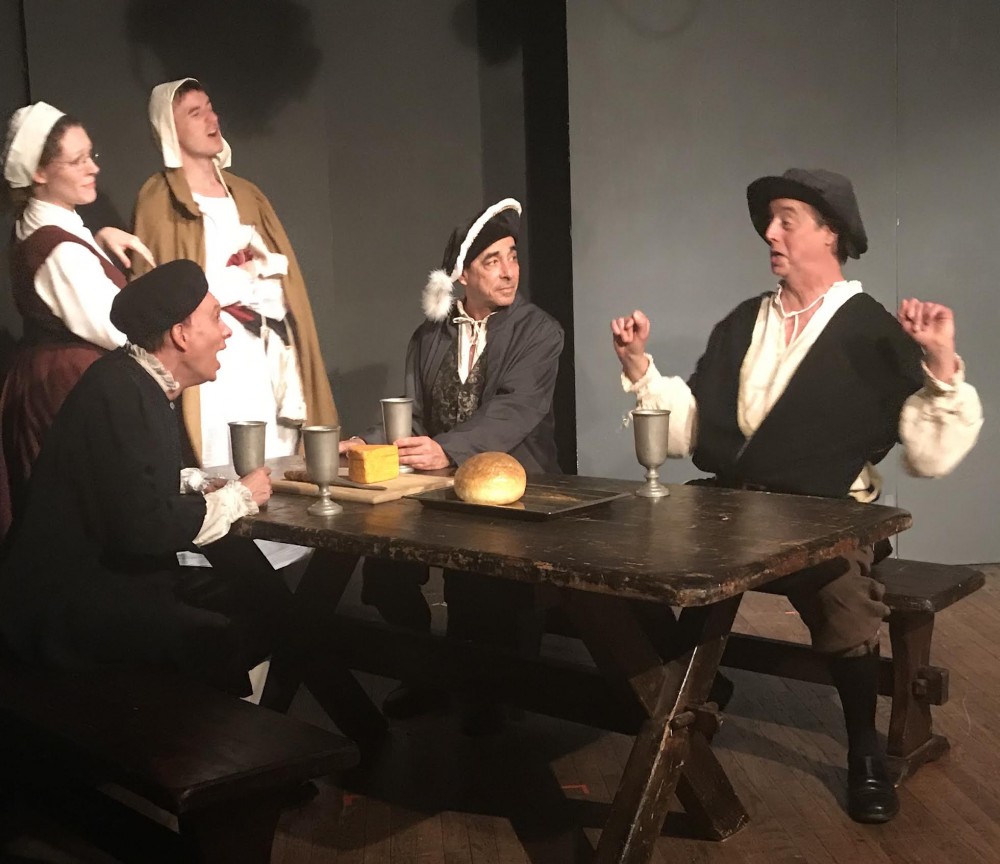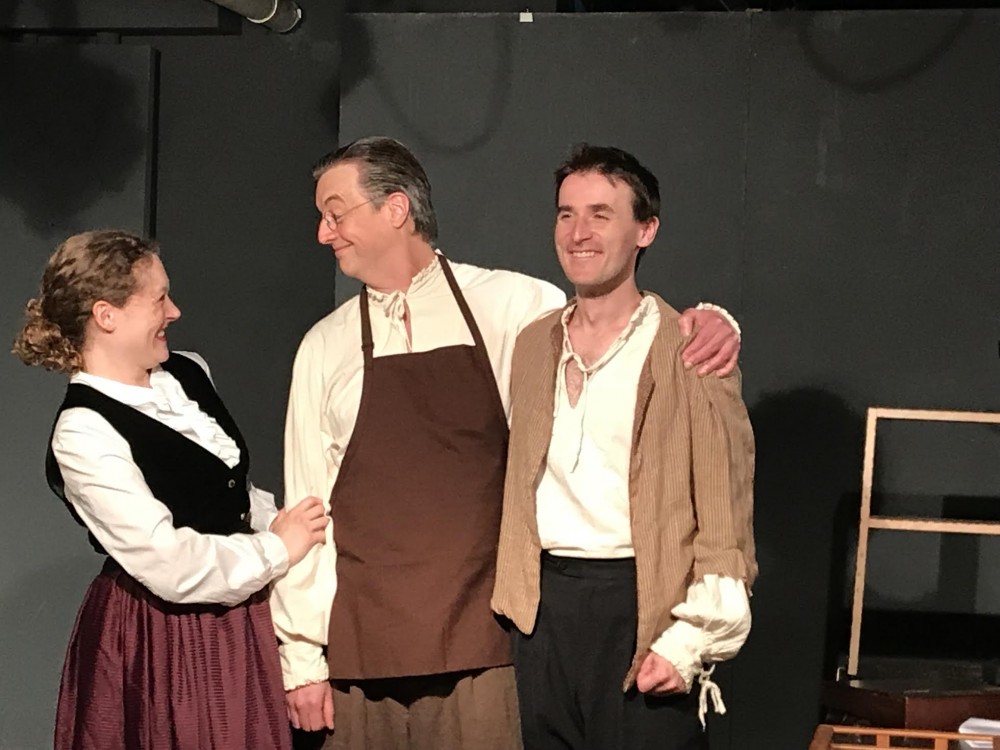A nifty, literate literary mystery
By Joel Benjamin
Peter B. Hodges’ Marlowe’s Fate is a nifty, literate mystery. For centuries scholars and theater specialists have debated whether a middle class, uneducated man like William Shakespeare could have produced so much theatrical and poetic brilliance.
Hodges clearly believes that Christopher (Kit) Marlowe, the author of Edward the Second, Tamburlaine the Great and The Tragic History of Doctor Faustus, was not stabbed to death at age 29 in 1593, but was instead self-exiled, sending poems and plays back from Italy to be claimed by Shakespeare to avoid revealing his location.
As directed by the playwright and produced by the Caravan Theatre Company, Marlowe’s Fate unfolds in a series of mostly chronological scenes taking advantage of Valeria Haedo’s barebones set of heavy wood furniture carted about to move from a rooming house to a printing shop and on to a prison and an inn in Stratford. Elizabeth Bove’s costumes are quite extravagant for an off-Broadway production.
The play is divided into two acts and five scenes that tell of the deceptions, spying and gossip that led to Kit Marlowe’s (Tim Dowd) departure under a cloud. Each scene in the program notes is preceded by a contemporary 16thcentury quotation that ultimately complicates matters more than necessary but displays Hodge’s obvious intellectual prowess.
At Mistress Bull’s House on the Thames, Eleanor Bull (Sarah Kiefer) reluctantly hosts a late-night meeting of businessman Ingram Frizer (Brady Adair), hireling Nicholas Skeres (Len Rella), Robert Poley (Thomas Grube) an agent of the Crown and the infamous poet, playwright and agent of the Crown, Kit Marley (aka Marlowe, played by Tim Dowd). Hodges cleverly presents a cross section of English society. Marley is unceremoniously informed that he is slated to die for anti-royal sentiments in his latest opus. A plot to spirit him away from England involves finding a body to be buried in his stead.
The dark plot moves swiftly along with visits to Richard Field’s print shop where Shakespeare’s (Dowd) name (variously spelled as Shaxper & Shakespeare) forcefully replaces Marlowe’s in the published edition of Venus and Adonis. Shakespeare is portrayed as loutish, illiterate and lazy, perhaps an exaggeration, but one that helps Hodges’ theories ring true.
The best scene is Marlowe’s Fate comes at the beginning of Act II: A Punch and Judy version of the battle of wits between Shakespeare and Marlowe, staged as a mock puppet wrestling match complete with a Barbie Doll displaying round numbers. The Marlowe puppet (Dowd) comes to blows with the Shakespeare puppet (Grube) as the facts of their lives are tossed out.
Although the play ends on a dreary note, its illumination of the lives of the characters—each actor portraying multiple figures—and the end of the Tudor line and the beginning of the Stuart dynasty keeps the audience on its toes and constantly surprised.
Hodges’ easygoing direction and the talent of this five-member cast keep the stylized dialogue zipping along with intensity and humor.
Photos by: Peter B. Hodges
Marlowe’s Fate (through May 26, 2018)
Studio Theatre, Theatre Row Theatres
410 West 42ndStreet (between 9th& 10thAvenues)
New York, NY
For tickets, call 212-947-8844 or visit www.telecharge.com
Running time: 120 minutes with one intermission

























